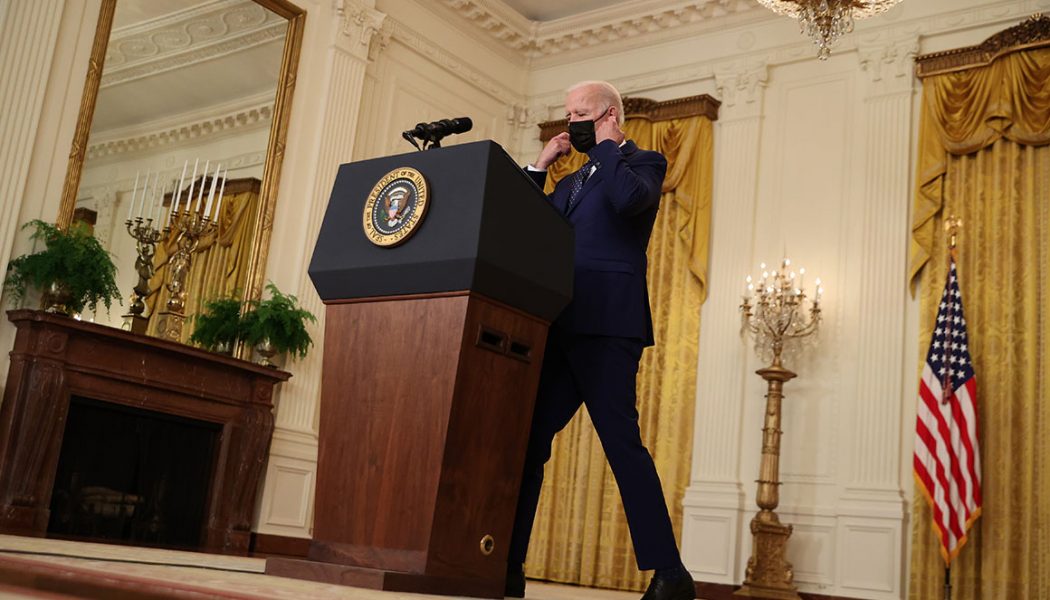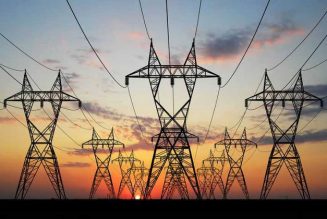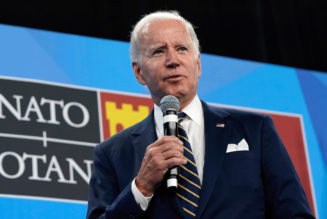
The sheriff has recruited a Who’s Who of veteran climate leaders along with a mission-driven posse of outspoken younger climate wonks and activists to help him take on global warming. Biden’s climate all-stars will help him as well as pressure him to keep his climate pledges, including a zero-emissions electric grid by 2035, a carbon-neutral nation by 2050 and the 2030 goals he plans to announce this week at his Earth Day climate summit.
It still won’t be easy for Biden and his climate-conscious team to convert his bold rhetoric into reality. Congress will determine the fate of Biden’s $2.5 trillion infrastructure plan, which means its $1 trillion worth of green initiatives will have to pass muster with Sen. Joe Manchin of West Virginia. Republicans are loudly rejecting anything with climate content as a Green New Deal in disguise. And the Supreme Court will have the power to strike down laws or rules limiting carbon pollution. But there’s still a lot an aggressive executive branch can do to accelerate the transition from fossil fuels to clean energy.
Biden’s most senior White House climate aides are all former managers of large agencies who are now content just to have the president’s ear. David Hayes, who ran a department of 70,000 employees as deputy Interior secretary under former President Bill Clinton and again under former President Barack Obama, is now a White House climate adviser under Biden. Jane Lubchenco, a celebrated marine scientist who led 12,500 employees as director of Obama’s National Oceanic and Atmospheric Administration, now oversees a staff of about a dozen as deputy director of Biden’s science office. Even Biden’s top foreign and domestic climate aides, John Kerry and Gina McCarthy, accepted less prestigious positions than they had as Secretary of State and EPA Administrator to try to help move the needle on global warming.
And while it’s not surprising that a Democratic Cabinet would include committed climate officials like Michael Regan at EPA, Deb Haaland at Interior and Jennifer Granholm at Energy, Biden’s transportation, commerce and labor secretaries, Pete Buttigieg, Gina Raimondo and Marty Walsh, sound just as climate-forward. Buttigieg ran for president as a climate champion; Raimondo pushed America’s first offshore wind farm as governor of Rhode Island, and Walsh, the former Boston mayor, took over the Climate Mayors coalition in November before he was tapped to join the new administration. Even Agriculture Secretary Tom Vilsack, who took a mostly traditional approach to the same job under Obama, keeps saying that climate will be one of his top priorities this time around.
Meanwhile, the head of Biden’s National Economic Council, Brian Deese, was the head of sustainable investing at BlackRock when the investment firm was trying to position itself as a business leader on climate issues. Biden’s chief of staff, Ron Klain, is also climate-friendly; his wife, Monica Medina, edits a climate newsletter. And a diverse array of next-generation voices from the worlds of advocacy, philanthropy, think tanks and government have moved from Climate Twitter to powerful roles throughout the Biden Administration.
It’s often said in Washington that personnel is policy, and it would be hard for the president not to push the climate envelope after hiring so many envelope-pushers. If Biden has recruited the climate equivalent of America’s 1992 Olympic “Dream Team” — as Ali Zaidi, McCarthy’s deputy, describes it — his Michael Jordans and Charles Barkleys will all expect to hoop.
“I’m completely obsessed with creating clean energy jobs, and Joe Biden is obsessed, too,” Granholm gushed in an interview. “There’s definitely an all-in ethos on this team.”
There just isn’t much subtlety about the Biden team’s enthusiasm for climate action. The Twitter bio for Hayes begins: “Climate & clean energy 24/7.” The Twitter handle for Sonia Aggarwal, a vice president of the nonprofit Energy Innovation before becoming a White House adviser for climate policy and innovation, is still @cleantechsonia.
Team members say their meetings are a bit surreal — not only because they’re all virtual, but because the participants all understand without ever saying so explicitly that their goal is decarbonizing the country. Jane Flegal, the senior director for industrial emissions at the White House Council on Environmental Quality, says they feel like strategy sessions among like-minded climate advocates.
“The assumption is that climate isn’t just aligned with the economic agenda, it is the economic agenda,” said Flegal, who was managing the Hewlett Foundation’s U.S. climate grants before joining the team. “We don’t have to marshal evidence every time to make the case.”
To Washington Republicans, all this unabashed green cheerleading reflects a liberal government stocked with radical ideologues by a supposedly moderate president. They say Biden’s executive orders shutting down the Keystone pipeline, delaying new fossil-fuel projects on federal land and pledging a “whole of government” approach to climate action foreshadow an economy-wide attack on America’s coal, oil and natural gas industries. They say his massive infrastructure plan reflects the dominance of environmental utopians inside his White House.
“The only jobs Joe Biden is creating are for far-left special interest groups in Washington, D.C.,” said Republican National Committee rapid-response director Tommy Pigott. “While his climate envoy John Kerry still has not gotten rid of his carbon-emitting private jet, thousands of Americans have already lost their jobs because of Biden’s executive orders.”
Biden’s approach to climate is obviously a radical shift from the Trump Administration, which rejected climate advocacy and relentlessly promoted fossil fuels. But it’s also a shift from the Obama Administration, which pushed climate action sporadically, sometimes reluctantly, and never this vigorously. Hayes recalls that when his team at Interior unveiled a wind power initiative during the Obama years, the White House was supportive but uninvolved. “We felt like we were doing all of it on our own,” Hayes says. By contrast, Hayes helped coordinate an offshore wind announcement last month from the Biden White House that featured not only Interior but the Departments of Energy, Commerce and Transportation.
“There’s a sense of working together for a common cause that I’ve never seen in my previous government experience,” Hayes said. “This administration has attracted the advocates, and they’re not just advocates for the sake of advocacy — they’re doers.”
Some Biden climate officials came directly from the advocacy world. McCarthy’s chief of staff, Maggie Thomas, was the political director of Evergreen Action, which successfully pressured the Biden campaign to embrace big plans like a national clean electricity standard. McCarthy’s adviser for climate policy and finance, Jahi Wise, was the Coalition for Green Capital’s policy director, pushing for a green infrastructure bank that’s now in Biden’s plan. Aggarwal and Energy deputy chief of staff Jeremiah Baumann worked to accelerate the green economy at the nonprofit Energy Innovation. CEQ’s director for environmental justice, Cecilia Martinez, co-founded and ran the Center for Earth, Energy and Democracy to help low-income communities affected by climate change and pollution.
For climate advocates who remain on the outside, it’s intoxicating to see so many longtime allies moving into insider positions of power. “It’s so exciting to have these wonderful people we’ve been working with suddenly in the driver’s seat,” says University of California at Santa Barbara professor Leah Stokes, who serves on Evergreen Action’s advisory board.
The team has been especially focused on environmental justice, inserting provisions in the infrastructure plan like a $20 billion effort to reconnect urban neighborhoods divided by highway projects, incentives to undo “exclusionary zoning” laws that often segregate suburbs, and a goal to allocate 40 percent of the benefits of relevant investments to disadvantaged communities. That reflects not only Biden’s promises to redress inequities but the makeup of the team itself. EPA head Regan and CEQ head Brenda Mallory are both African Americans who have called attention to environmental inequities in the past. Mark Chambers, who led New York City’s sustainability officials before he became CEQ’s director of building emissions, says that every White House climate discussion has an environmental justice angle.
“It’s not an afterthought you need to force into the conversation; it’s front and center on every agenda,” said Chambers, an African American architect who sat in front of a Black Lives Matter poster during a Zoom interview. “It makes you feel like you’re in the right place.”
Progressive activists successfully pressured Biden not to bring back Obama advisers with ties to fossil fuel interests, like former Energy Secretary Ernest Moniz and White House aide Heather Zichal, and they’re mostly thrilled with the climate team. But they’re not entirely thrilled. For example, they’re happy Treasury Secretary Janet Yellen has hired a head of climate finance, but they’re disappointed with the choice of financier John Morton rather than a regulator. Jeff Hauser, director of the left-leaning Revolving Door Project, is also unhappy about Kerry’s hiring of Wall Street private equity veteran Mark Gallogly as an adviser — and to some extent about Kerry himself.
“We’re worried he’ll accept the Wall Street idea that climate action can happen voluntarily,” Hauser said.
That said, Kerry has also hired some experts who command respect among climate advocates, like Varun Sivaram, a physicist and clean-tech expert who wrote a book about the solar industry, as well as Jonathan Pershing, who oversaw Hewlett’s climate programs after holding the climate envoy job during the Obama administration. It sends a message when a former Secretary of State takes a job as a mere envoy, and White House officials say this week’s climate summit should send a similar message about the administration’s seriousness.
Lubchenco, the former NOAA director who is now just another White House science adviser, says the veteran climate officials in Bidenworld don’t care about job titles. They just want to make tangible progress on an issue that’s been back-burnered for decades.
“Those of us who have worked on this for so long, we see an opportunity to be useful,” Lubchenco says. “There aren’t a lot of egos. Just a motivation to make things happen.”
The bureaucrat best-positioned to make things happen may be Shah, who has taken over a clean-energy loan office with $40 billion in unused lending authority that’s mostly gathered dust since the Obama Administration’s bet on the solar manufacturer Solyndra went bust in 2011. Shah says he asked tough questions in his job interviews to make sure the Biden team wouldn’t still be gun-shy about using it, and Granholm assured him the new clean-energy strategy would be: Deploy, deploy, deploy.
“So far, all the data points show that this administration is serious about doing things that aren’t incremental,” Shah said. “The ambition is breathtaking.”
A few months ago, Mark Chambers routinely had to scrounge for money in his budget to buy coffee for community meetings, where New York residents would discuss their dangerous lead pipes and crumbling schools. Now Chambers is working on an infrastructure proposal that includes $45 billion to replace all the nation’s lead pipes and $100 billion to repair schools.
“We’re at a critical moment in the story arc of our species,” Chambers said. “To work on these issues at this scale, it’s a dream come true to be part of it.”









